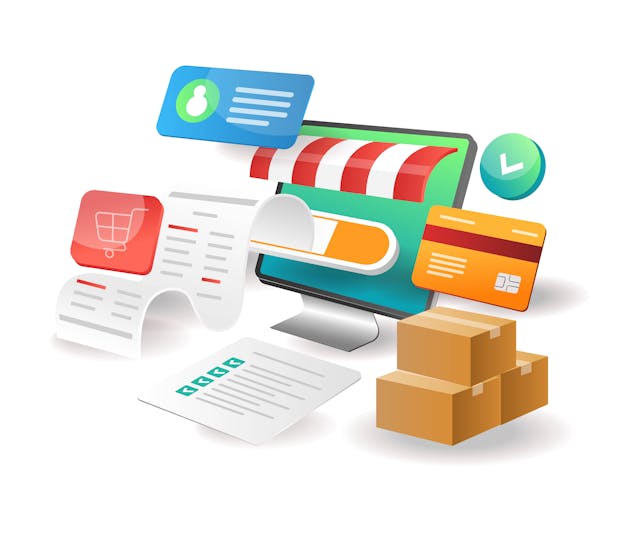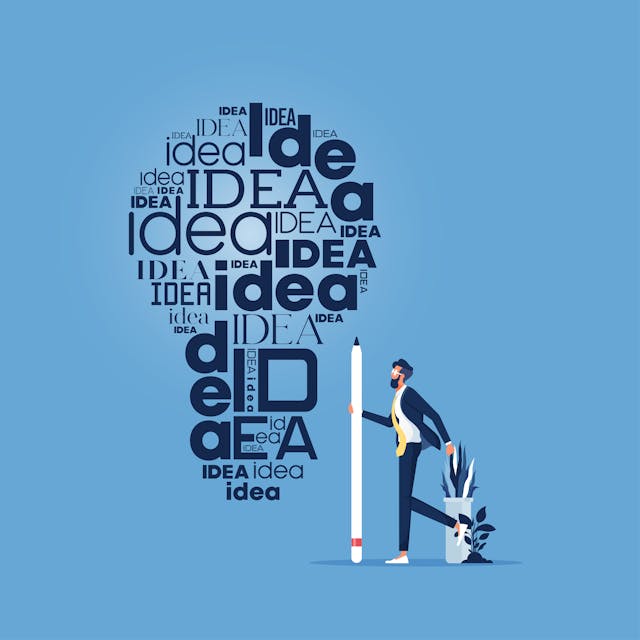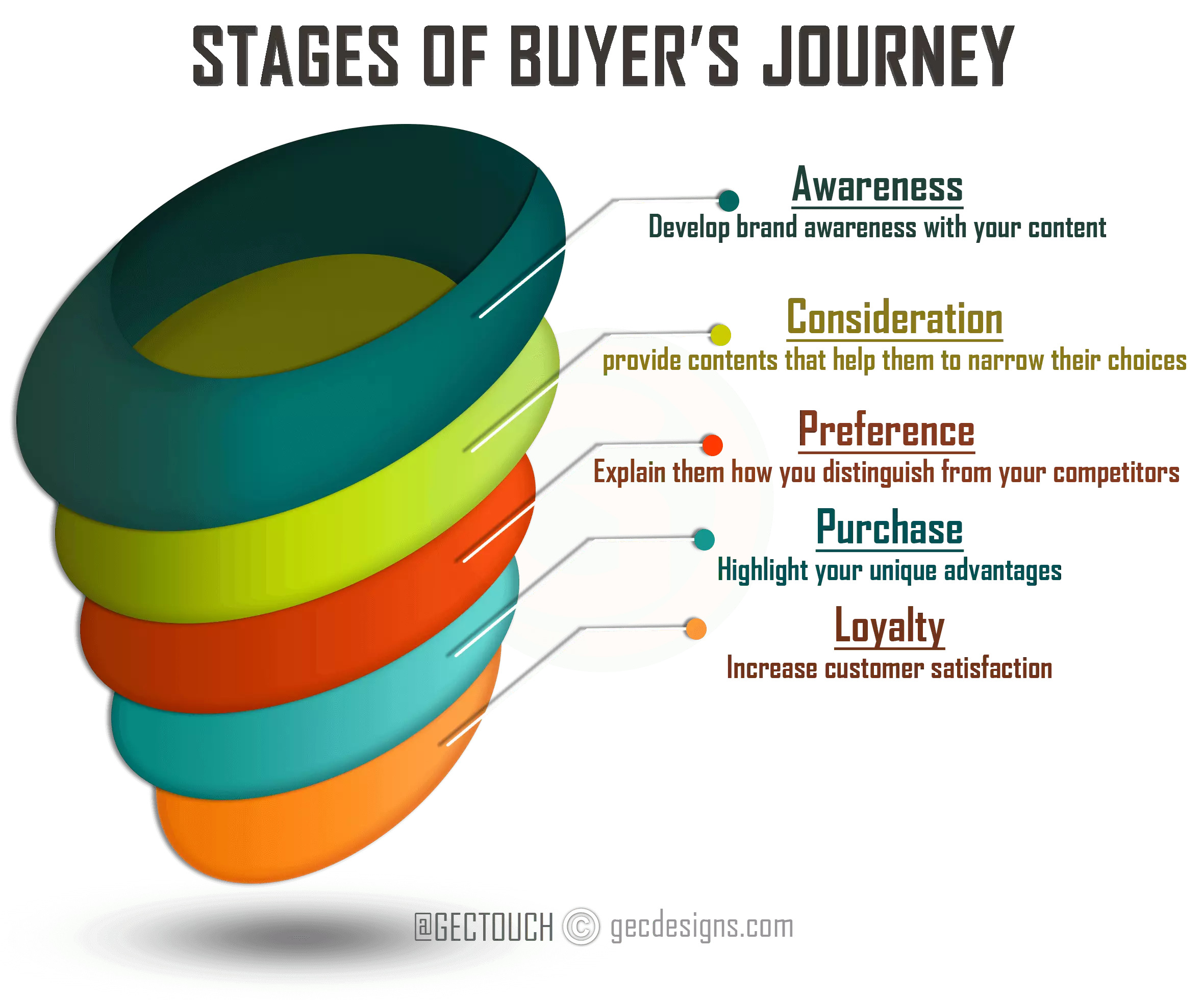6 Steps to Create an Effective Content Marketing Strategy
Content marketing is one of the best marketing strategies for any business, it is the best and powerful strategy to bring more audience to your business which means you have more opportunity to convert them as your customer.
What is Content Marketing?
Content marketing is a strategic marketing approach focused on creating and distributing valuable, relevant, and consistent content to attract and retain a clearly-defined audience and ultimately, to drive profitable customer action.- Joe Pulizzi, Founder of the Content Marketing Institute.
What is a content marketing strategy?
You have probably heard one famous quote by Stephen Covey, “Goals are pure fantasy unless you have a specific plan to achieve them”.
Every marketing success depends upon its strategy. Without a strategy you cannot achieve your goal rather than it will ruin all your efforts, time, and money only. Isn’t it?
An engaging, compelling, high-quality, unique content is the key to the success of content marketing. If you are looking for the best way to increase website traffic, brand awareness, trust, and build a successful business, it is time to think about the best strategy to optimize and promote your content.
Content marketing strategy is a roadmap that tells you what type of content should you produce? How often do you publish? Who is your target audience is? And how will you go to distribute it? It helps you to create the right content for the right people at the right time.
In this article, we have listed 6 simple steps on how to create an effective content marketing strategy that will help you to reach your ideal audience.
Before diving into the topic, let’s have a look at some stats about content marketing which will help to understand the importance of content marketing for every business.
Content Marketing Statistics & Facts
- According to Forrester, The average person consumes 11.4 pieces of content before making a purchase decision.
- Per Curata, long-form content generates 9 times more leads than short-form content.
- Per Hubspot, B2B marketers that blogged 11 + times per month had almost 3 times more traffic than others.
- According to Hubspot, 53% of marketers say blogging is their top content marketing priority.
- According to Demand gen, 95% of B2B buyers consider content as trustworthy when evaluating a company.
- According to Kapost, Interactive content generates 2 times more conversions than passive content.
According to the content marketing institute,
- Content marketing gets 3 times more leads than paid search advertising.
- 93% of B2B marketers are extremely committed to content marketing.
- 92% of marketers said their organization views content as a business asset.
- Content marketing costs 62% less than traditional marketing.
Content Marketing Strategy in 6 steps
- Define your goal
- Understand your audience
- Identify content formats
- Create an effective content
- Promote your content
- Evaluate your performance
Content Marketing Strategy Infographic
Content marketing is a strategic marketing approach focused on creating, distributing, valuable, relevant, and consistent content to attract a targeted audience.
1. Define your goal
Before developing your content marketing strategy, you need to answer one question that is “what is your objective?”. All content marketing strategy starts with a clear goal and without a defined goal, you cannot create effective content. Determined Goals will give direction to the content marketers.
Make sure that your content marketing goals should be S.M.A.R.T goals which mean Specific, Measurable, Attainable, Relevant, and Time-bound.
Some key goals are,
- Build Brand awareness
- Increase website traffic
- Improve search ranking
- Increase email newsletter subscriptions
- Build your reputation
- Improve audience engagement
- Generate Leads & Increase sales
- Improve loyalty and retention
- Grow your social community
- Increase your conversion
2. Understand your audience
Understand your audience is key to content marketing success. Even you have high-quality content, your content will be useless if no one engages with it. Your audience should feel this content is personally written for them when they reading your content.
You need to figure out who your target audience is, which helps you to create perfect content to reach them.
You should create audience personas which include demographics such as their age, gender, education level, location, income, occupation, and psychographics such as interests, hobbies, and preferences. But those data are not enough for creating a successful audience persona, you should understand your audience more than that.
You also need to understand,
- What does your audience want?
- What type of content formats and topics do they prefer?
- Where are they getting their information?
- What is their favorite social media platform?
- What are their problems?
- How can your content solve their problems?
- What is the best time to reach them?
There are many ways to collect information. You can conduct direct interviews, Online surveys, and Research the websites which your audience visits to gather data. You can also use website survey tools like Google forms, Survey Monkey, and Typeform.
3. Identify content formats
Next, you need to find out, what types of content are you going to create? There are lots of content formats out there such as articles, slide shares, Infographics, videos, interactive contents, e-books, social media updates, webinars, testimonials, podcasts, and so on.
You should identify the right content format which will help you to reach your target audience and the right content format mainly depends upon three things including your product type, your audience behavior, and the social media platform that you use.
Top content marketing formats
- Videos - According to a recent study, 80% of the brand audience would rather watch the live video than read a blog.
- Infographics - According to a Mass planner, Infographics are liked and shared on social media 3 times more than other forms of content.
- Interactive content –According to the CMI survey, 81% of marketers believe that interactive contents grab attention quickly.
- Blogs – According to Tech Client, the website with blogs have 434% more indexed.
- Webinars – Webinars are effective for lead generation.
- Case studies – According to the content marketing institute, 73% of B2B marketers publish case studies.
- Reviews – According to collective bias, 60% of consumers check online reviews while purchasing.
Content can also have a significant impact on the buyer’s journey.
Content formats for every stage of the buyer’s journey
Awareness
This is the first stage of the customer’s buying cycle. At this stage, an individual becomes aware of your products and services. They are looking for more information at this stage, so you need to educate them. You need to develop brand awareness with your content that will greatly help customers or visitors to move forward. Also, this is an opportunity to earn your buyer’s trust and interest.
Types of content formats at the awareness stage
- Blog posts
- Infographics
- PPC ads
- Videos
- Analyst reports
- E-books
- Social media posts
- Educational webinars
Consideration
At this stage buyers still in the educational mind and they are looking for information that will make them more confident about your products and services. At this stage, You have to provide content that helps them to narrow their choices.
You should focus on comprehensive, impactful content that compels your audience to take action that you want them to do. Provide strong evidence that suggests your products or services will increase the probability of lead generation.
Types of content formats
- In-depth blog posts
- Case studies
- Buyer’s guides
- Testimonials
- Reviews
- Product comparison guides
- FAQs
- Demo videos
- Live webinars
Preference
This stage is very important as this leads to a purchasing decision of your customer. At this stage, Consumers are interested in your products or services. Now, you must Explain to them how you distinguish yourself from your competitors and the benefits of your products or services. You must grab the attention of your visitors at this stage.
Types of content formats at preference stage
- Emails
- Landing pages
- Case studies
- Product demos
- ROI calculators
- Infographics
Purchase
Now they are ready to buy your product. Good content can improve your conversion at this stage. So make sure that your content should be brand-specific and it should highlight the unique value proposition and the competitive advantages of your products and services. Especially, Make sure the purchase process is easy and quick.
Types of content formats at the purchase stage
- Product demos/user manuals
- consultation
- Product reviews
- Free trails
- Click-through sales pages
- Vouchers / Coupons
- Troubleshooting videos or articles
- Special offers
This stage does not conclude the buying process.
Loyalty
At this stage, you have the opportunity to build a strong relationship with your customers. To Increase customer satisfaction, you need to provide value and it will gain returning customers, and a happy customer also likely to recommend your brand to others.
Types of content formats,
- Feedback forms
- Service and warranty information
- Email marketing / Newsletters
- Surveys
4. Create effective content
Content creation plays a significant role in content strategy and the success of content marketing depends on content creation. It consists of ideation, creating, editing, and optimization. Remember one thing before creating your content, you should use your content to differentiate your brand from your competitors.
Qualities of good content
- Informative – your content must provide value to your customers.
- Readable – Use short paragraphs and sub-headings will make your content more readable. Make sure that the fonts are easy to read.
- Entertain – entertain is one of the vital components for good content.
- Original – If you want to get more traffic to your website you must create original content.
- Sharable – your content must be easily shareable on social media.
- Actionable – It must tell your customer what to do next?
- Accurate – If you present someone’s opinion on your content make sure to give credit to them.
- Engage – your content should be engaging your audience and storytelling is one of the best ways to engage your readers.
· User-friendly format – make it easy to understand. Use simple language, Use bold text, bullet points and so on.
- Targeted – your content must fulfill your audience's needs.
Recommended post: 10 simple tips to create engaging content
Now you should optimize your content that will help your content get higher search engine ranking in SERPs.
Focus on keyword research – content creation starts with keyword research. First, you need to find the targeted, related keywords to optimize your content. Google keyword planner and Ubersuggest will help you to find your keywords effectively. Target long-tail keywords and that have 2.5 more conversions than short keywords.
Check this post to know more about keyword research- the beginner’s guide
Focus on creating a strong headline for your content - A headline is an important part of your content. According to copyblogger, on average, 8 out of 10 people will read headline copy. Create enticing headlines that include keywords naturally. ShareThrough Headline Analyzer will help you to analyze your headline and it also gives a score to your headline.
Focus on Title tags and Meta descriptions - Make sure to write title tags and Meta descriptions for all pages which include appropriate keywords. Keep your title tag between 50 – 60 characters and keep your meta description below 155 characters.
Keywords should be used in the alt text, a body of the content, and anchor text as well. Make sure that your content is free of spelling and grammatical errors. Check this post to Improve your website SEO.
If you are producing visual content, including a written summary, that will help search engines to find the content appropriately.
5. Promote your content
After content creation, you need to publish and promote your content. Without promotions, your content marketing strategy will not be successful. Understand, Where your audience looking for online content and ensure to pitch your campaign there.
Some effective ways for content promotion
- Share your unique, valuable content on Social Media like Twitter, Facebook, LinkedIn, YouTube, and Instagram which is helpful for your ranking and your backlinks as well.
- Use paid ads to promote your content.
- Use emails also. Email marketing is an effective way to promote your content.
- Influencer marketing is another effective way to promote your content.
- Submit your content to content communities like Quora, Bizsugar, and Inbound.org.
- Internal linking – link to your new content from old.
- Guest blogging – Write to others and include links to your content.
As a part of your content strategy, you will need to develop a content schedule and make sure to publish your content consistently.
6. Evaluate your performance
Now it is time to measure the metrics and evaluate how well your content marketing strategy is performing? You need to find out whether the content marketing tactics are actually working or not and with some questions you can figure out the performance of your content.
Did you achieve the goal of your content marketing? Did your content compel your audience to take the necessary action that you want them to do? With those answers, you can identify what strategies are effective and where the content needs improvement.
Google analytics tool will help you to measure the results and social analytics tools like Buffer, Sprout Social, and Hootsuite will help you to measure your social media activities.
Some KPIs (key performance indicators) to measure your content marketing success are,
- Website traffic
- Bounce rate
- Number of likes and shares
- Number of comments
- Number of followers
- Number of leads
- Number of downloads
- Pageviews
- Page visit duration
- Conversion rate
- Click-through rate
With the help of the metrics, you can able to update your content marketing strategy on a regular basis.
Benefits of content marketing
- Effective content will bring more traffic to your website.
- More content means more opportunities to rank higher.
- Content helps you to build authority and credibility.
- It can help you to build brand awareness
- Great content is an effective way to generate leads.
- It will help you to build trust with your audience.
- It will help you to build a relationship with your customers.
- Content helps you to increase brand loyalty.
- Content marketing is cost-effective
- Quality content helps you to get more social media followers.
Conclusion
Your content must be adding value to your audience and that is the secret of content marketing success. Content marketing creates a positive brand image and that helps you to build trust among your audience. Importantly, content marketing is a never-ending process and it needs revisions on a regular basis. You should improve your content marketing strategy continuously for your success.

Rajanarthagi
Content writer and Marketer
An enthusiastic SEO expert, passion for digital marketing with two years of expertise in writing Digital Marketing and SEO content. She is a Master of Business Administration graduate from a reputed university in south India. Her passion for SEO and online marketing helps her to stay up to date with the trends and strategies. Follow her on social media sites, to stay up to date with SEO, and Digital Marketing, Updates. To contact Raji, visit the contact page.






